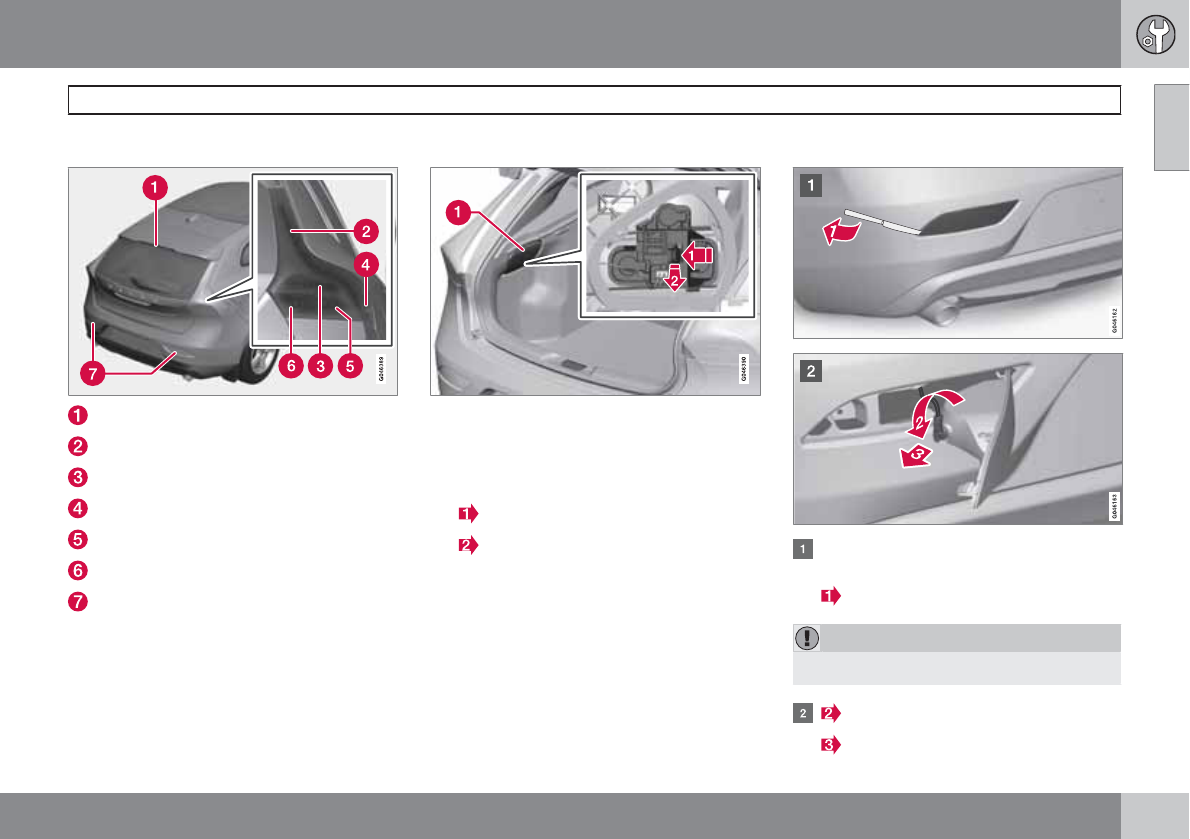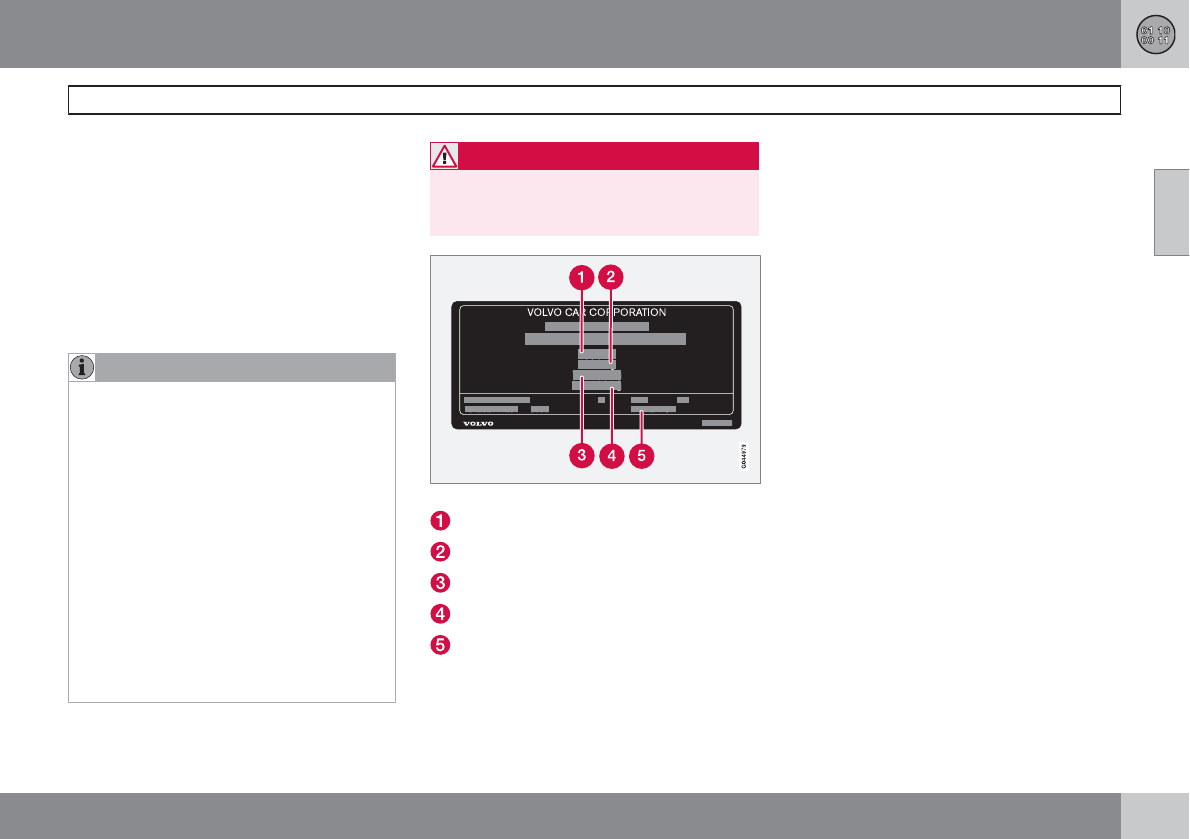-
Bij mijn volvo v40 D4 geeft ie een storing aan van gordels en portieren. Weet iemand hoe dit komt?
Reageer op deze vraag Misbruik melden
Gesteld op 21-10-2024 om 19:20 -
Hoe vervang ik het sensus navigatiesysteem van mijn Volvo v40 Momentum Gesteld op 30-7-2024 om 17:02
Reageer op deze vraag Misbruik melden -
Ik krijg mijn Volvo niet meer gestart ,was accu leeg maar het grootste ongemak is dat de wagen ook niet meer op slot gaat Gesteld op 14-10-2023 om 16:02
Reageer op deze vraag Misbruik melden-
ook niet met bijgeleverde sleutel ? Geantwoord op 15-10-2023 om 09:59
Waardeer dit antwoord Misbruik melden
-
-
kopelings pedaal blijft af en toe hangen hoe kan dat van volvo v40 Gesteld op 1-5-2022 om 10:33
Reageer op deze vraag Misbruik melden -
Bij mijn volvo v40 t3 geeft ie een storing aan van gordels en portieren. Weet iemand hoe dit komt? Gesteld op 4-9-2021 om 21:06
Reageer op deze vraag Misbruik melden -
Op mijn analoog instrumentenpaneel (V40 uit 2017) zijn de dagtellers (t1 en t2) verdwenen en verschijnen ze ook niet wanneer ik ze via het menu aanvink. Voor brandstofverbruik idem. Gesteld op 13-7-2021 om 20:25
Reageer op deze vraag Misbruik melden-
Gebruik het duimwiel op de linker pook achter het stuur. Geantwoord op 5-1-2023 om 13:27
Waardeer dit antwoord (2) Misbruik melden
-
-
Kan de voorstoel van V 40 worden ingeklapt, zodat ik langere voorwerpen kan Vervoeren? Gesteld op 20-10-2020 om 09:53
Reageer op deze vraag Misbruik melden -
Verschillende portieren gaan de ene keer wel open de andere keer niet, alleen de bestuurdersdeur werkt altijd. Als ik van binnenuit de portieren vergrendel en weer ontgrendel dan werken ze weer. Wat kan de oorzaak zijn? Gesteld op 5-3-2020 om 18:05
Reageer op deze vraag Misbruik melden -
pedestrian protection service required
Reageer op deze vraag Misbruik melden
Dit bericht krijg ik sinds kort op mijn dashboard , bij het overschakelen voel ik nu enkele seconden kracht verlies .....
Ik heb geen aanrijdingen gehad , kwam zomaar spontaan op ..
wat kan je hier aan doen ? Gesteld op 20-1-2020 om 17:20-
Dit heb ik nu ook , verscheen zomaar op het dashboard.
Waardeer dit antwoord (8) Misbruik melden
Heb geen aanrijding of iets gehad? Geantwoord op 2-8-2020 om 00:34
-
-
kijk naast de koppelingspedaal, helemaal links waar je voet op rust onder het matje, als je de kappen zijkant weghaalt kun je het zwarte matje weghalen dan zie je een aantal kabels, kijk of de stekker er goed in zit en of de kabels niet beschadigd zijn Geantwoord op 1-9-2020 om 17:21
Waardeer dit antwoord (8) Misbruik melden -
hoe stel ik de standkachel in op de sleutel van een volvo v40
Reageer op deze vraag Misbruik melden
bvd Gesteld op 18-1-2020 om 16:23 -
hoe zet ik de spraakbegeleiding in navigatie aan en uit ? Gesteld op 14-1-2020 om 18:22
Reageer op deze vraag Misbruik melden -
Heeft de volvo v40 d2 2013 additief vloeistof voor roetfilter. Oftewel is er een aparte vloeistof voor het roetfilter nodig Gesteld op 6-12-2019 om 21:54
Reageer op deze vraag Misbruik melden-
nee, geen adblue oid. Geantwoord op 13-12-2019 om 10:25
Waardeer dit antwoord (1) Misbruik melden
-
-
ik doe voor autocontrole marly roetfilter reiniger toe aan mijn diesel en altijd groene kaart
Waardeer dit antwoord (1) Misbruik melden
gekregen Geantwoord op 13-12-2019 om 10:38 -
Hoe kan ik de hoofdsteunen van de voorstoelen van mijn V40 jaargang 2000 verwijderen? Gesteld op 25-11-2019 om 12:25
Reageer op deze vraag Misbruik melden-
halo ik zit met het zelfde probleem v40 van 2002 ?? Geantwoord op 4-12-2019 om 10:36
Waardeer dit antwoord (1) Misbruik melden
-
-
Hallo ik heb een Volvo v40 van het jaar 2015 ,de vraag is,is het normaal dat er maar 1mistachterlicht brand Gesteld op 8-2-2019 om 20:05
Reageer op deze vraag Misbruik melden-
Klik op deze LINK Geantwoord op 22-2-2019 om 11:43
Waardeer dit antwoord (1) Misbruik melden
-
-
Een goede garage zorgt dat er maar 1 mistlicht links werkt. Anders lijkt het teveel op remlichten. Geantwoord op 28-4-2019 om 16:11
Waardeer dit antwoord Misbruik melden -
ik wil de plastic van de pinker in de rechter buitenspiegel van mijn volvo v40 vervangen ....hoe kan ik de spiegel open doen ? Gesteld op 7-1-2019 om 20:11
Reageer op deze vraag Misbruik melden-
Normaal kun je de plastiek, achterkant van de spiegel aftrekken zonder de spiegel open te doen, is bij mij wel zo gelukt Mvg Geantwoord op 7-1-2019 om 20:37
Waardeer dit antwoord Misbruik melden
-
-
Hoe kan ik een update van Europa in mijn navigatiesysteem updaten? Gesteld op 24-12-2018 om 21:47
Reageer op deze vraag Misbruik melden-
Volgens mij moet je daarvoor cd's bij de dealer bemachtigen, het zijn er dacht ik vijf, die moet je dan in de cd speler afspelen waardoor je navigatiesysteem update Geantwoord op 24-12-2018 om 23:54
Waardeer dit antwoord (1) Misbruik melden
-
-
U moet eerst door de dealer eeo software update laten doen, dat kost ongeveer 60 euro, daarna kunt u op
Waardeer dit antwoord Misbruik melden
Klik op deze LINK
De kaart updates naar een usb stick downloaden en via het infotainment systeem uploaden naar de v40.
Groet,
hvdnb
Geantwoord op 25-12-2018 om 06:38 -
hoe kan ik de rechter achterdeur openen, deze opent nu helemaal niet meer maar is reeds de derde keer dat dit voorvalt? Gesteld op 27-1-2018 om 10:43
Reageer op deze vraag Misbruik melden-
Daar heb ik ook een paar keer last van gehad. Een paar keer kinderslot uit en aan zetten, de hele auto sluiten en de sloten weer openen, daarna op slot en de hele nacht laten staan zorgde er voor dat de volgende dag alles weer werkte. Niet echt een oplossing maar de deur gaat wel weer open. Geantwoord op 27-1-2018 om 11:32
Waardeer dit antwoord (16) Misbruik melden
-
-
Als ik muziek van men USB stick wil afspelen , dan krijg ik het eerst liedje te horen , daarna lees ik een melding met : kan het bestand niet afspelen.
Reageer op deze vraag Misbruik melden
Haal ik de USB eruit en stop ik em erweer in, dan speelt ie helemaal niks als weer melding van kan apparaat of track niet lezen
Kan er mij iemand helpen met dit probleem. Gesteld op 27-6-2016 om 09:13-
De muziek op USB stick moet Mp3 zijn ( geen WMA ) Geantwoord op 4-7-2016 om 14:09
Waardeer dit antwoord (6) Misbruik melden
-
-
Wat is het aanhaalmoment voor de olieaftapplug?
Reageer op deze vraag Misbruik melden
=====================================
====================================== Gesteld op 25-11-2015 om 16:20-
aanhaalmoment olie aftapbout is 35 NM of 309 inch/p potsleutel 17
Waardeer dit antwoord (1) Misbruik melden
aanhaalmoment oliefilter is 25 NM of 221 inch/p potsleutel 36 Geantwoord op 19-1-2017 om 12:26
-
-
Lampje met woord Service gaar branden.. Wat betekent dit? Gesteld op 3-10-2015 om 11:23
Reageer op deze vraag Misbruik melden-
Dat er een onderhoudsbeurt nodig is Geantwoord op 25-11-2015 om 16:21
Waardeer dit antwoord (2) Misbruik melden
-
-
Start/ stop systeem: welke factoren/ parameters spelen mee voor werking aub?
Reageer op deze vraag Misbruik melden
V40 - D2 - nieuwe auto
Bij andere merken is het zo, dat de start/stop steeds werkt, bij Volvo blijkbaar niet en ik heb tot nu toe zeer uiteenlopende reacties gekregen in verschillende Volvo garages.
Heb zo mijn twijfels en had graag correcte info gehad Gesteld op 18-8-2015 om 21:17-
knop helemaal onder in met draaiend pijltje Geantwoord op 10-11-2017 om 18:24
Waardeer dit antwoord Misbruik melden
-
-
USB bevat enkel mp3 bestanden, toch worden 2/3 van liedjes niet gespeeld en zegt hij 'track onleesbaar'...Oplossingen of oorzaak? Gesteld op 21-2-2015 om 22:49
Reageer op deze vraag Misbruik melden-
Heb V60 en hetzelfde probleem, nog niets gevonden om dit op te lossen Geantwoord op 26-7-2015 om 09:05
Waardeer dit antwoord Misbruik melden
-
-
mp3 bestanden aanpassen van VR (variable bitrate) naar CR (Constant Bitrate) - Gratis software zoeken met Google Geantwoord op 25-11-2015 om 16:23
Waardeer dit antwoord (2) Misbruik melden -
Heb het zelfde probleem, weet jij ondertussen waar het probleem ligt Geantwoord op 27-6-2016 om 09:16
Waardeer dit antwoord Misbruik melden -
Klik op deze LINK Geantwoord op 10-12-2019 om 02:03
Waardeer dit antwoord (3) Misbruik melden -
Deze link heeft me verder geholpen. Even alle bestanden erdoor gooien en het werkt terug!!! MP3QualityModifier Geantwoord op 10-12-2019 om 02:05
Waardeer dit antwoord Misbruik melden -
wij hebben een Volvo v40 het groot licht brandt niet meer oorzaak?
Reageer op deze vraag Misbruik melden
Gesteld op 27-1-2015 om 18:10-
misschien is de lamp kapot?| Geantwoord op 13-6-2016 om 00:00
Waardeer dit antwoord Misbruik melden
-
-
bij mijn volvo v40 2001 hoor ik een schrapend geluid bij de motor na 30 kilometer rijden Gesteld op 25-1-2015 om 19:35
Reageer op deze vraag Misbruik melden-
nokkenas afregeling?? Geantwoord op 21-5-2015 om 07:36
Waardeer dit antwoord (3) Misbruik melden
-
-
Hoe moet de klep brandstoftank open? Gesteld op 19-8-2014 om 07:07
Reageer op deze vraag Misbruik melden-
Hoe moet de klep brandstoftank open?
Waardeer dit antwoord (38) Misbruik melden
En waar zie ik hoeveel benzine ik nog heb?
Wat voor benzine moet ik tanken? Geantwoord op 28-11-2014 om 16:39
-

























































































































































































































































































































































































































